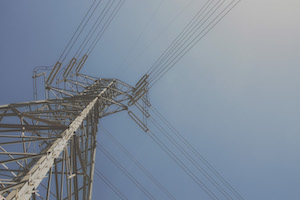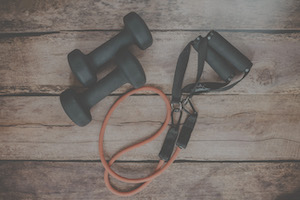If cameras don’t slow serial speeders, ‘limiters’ can
Last Saturday afternoon at about 1 o’clock, according to New York City police, a 2023 Audi A3 was traveling north on Ocean Parkway in Brooklyn at about twice the speed limit when it ran a red light, hit a cab, flipped over and slammed into a family of pedestrians. A mother and her two young daughters were killed, and her son was severely injured.
This was a sadly foreseeable tragedy: Since August 2023, that same car had racked up 21 speed-camera violations and five red-light violations, according to city records. This fact, plus some technological advances, raises a novel question. What if traffic-safety efforts were focused as much on vehicles as on drivers? That is, in addition to punishing speeders, why not prevent their cars from speeding?
That this is even a possibility is due in part to New York City’s network of speed and red-light cameras, the nation’s largest. The cameras have been a huge success at getting people to drive more slowly around schools and at intersections. They have also proved to be remarkably effective at identifying dangerous drivers — but this knowledge is seldom acted upon.
One major obstacle is that the speed cameras ticket cars, not drivers, so the usual punishments for speeding violations don’t apply. In 2020, New York City instituted a program to impound cars with frequent speed-camera violations whose owners refused to take safety classes, but it lapsed in 2023 after only 12 impoundments. A more promising approach may be to leave frequent-offender cars on the road but make it impossible for them to speed.
A bill pending in the New York legislature would require the owner of any car with six or more speed-camera violations within 12 months to install a speed limiter. These devices — “intelligent speed assistance” is the term of art — use mapped speed limit data and sometimes cameras to determine how fast a car is allowed to go. The District of Columbia and Virginia recently enacted the first U.S. laws requiring repeat speeders to install the devices, although these did not apply to speed-camera violations, as New York’s law would.
After last weekend’s events, says Amy Cohen, founder and president of the advocacy group Families for Safe Streets, “it will be unconscionable if they do not pass the bill this session.”
There is still opposition, however. Assembly member Michael Novakhov, who represents parts of Brooklyn, says that six violations is too few to trigger the requirement. “Any driver can get much more than six,” he told Streetsblog. “Sometimes you don’t see the camera. Sometimes there are situations where you have to speed up a little bit. To be honest with you, I’m against the cameras because we have too many.”
Novakhov could be right about six not being the optimal threshold — in city DOT data, risks start to skyrocket once annual violations are in the teens. But his opposition to speed cameras is worth dwelling on because it represents a point of view that is both wrongheaded and widely held.
Speed cameras have been shown to be much fairer than nonautomated enforcement, and no, nobody has the right to drive a potentially deadly vehicle on a public road at speeds higher than the community has deemed safe. In Europe, speed cameras have helped drive a sharp decline in traffic fatalities since the 1960s.
In the U.S., where they were first introduced in the 1980s, cameras sparked a backlash that led to them being banned in several states. According to the Insurance Institute for Highway Safety, they are currently used in 308 communities nationwide (that’s out of about 19,500 total).
In New York City, which has had red-light cameras since 1994 and school-zone speed cameras since 2014, there has been a conscious effort to avoid seeming overly strict or punitive. Violations are issued only if a car exceeds the speed limit by at least 11 miles an hour, the cost per violation is just $50 — less than the city’s cheapest parking tickets — and there’s no step-up in fines after multiple violations.
In reaction to an increase in nighttime reckless driving and traffic fatalities during the COVID-19 pandemic, the state gave the city permission in 2022 to run the school-zone cameras 24 hours a day, seven days a week. In the year after the change, the city reported a 7.6% decrease in night and weekend traffic injuries near street camera locations, versus a 1.4% increase at a set of control locations without cameras.
Still, the new policy attracted some gripes, with one semi-famous city dweller complaining on what was then called Twitter:
“What sort of off-brand city sends me a $50 camera ticket for speeding in a school zone for racing at 36 mph in a 25 zone at — wait for it — 5:40 a.m. in total darkness on a morning in — wait for it — mid-July? Two-word clue: Yankees Suck.”
Notably, while this post — from Baltimorean David Simon, author of the book “Homicide” and creator of the TV series “The Wire” — generated some outraged responses from New Yorkers, it got more likes and retweets than replies. Speed cameras remain pretty unpopular with drivers, and most American adults are drivers.
One appeal of speed limiters is that they seem like an appropriately proportional response to frequent speeding. Compared with impoundment, notes Cohen, they feel more fair and reasonable. That doesn’t mean implementation will be easy, or cheap. But given the potential for saving lives, it’s certainly worth trying.
Justin Fox is a Bloomberg Opinion columnist covering business, economics and other topics involving charts. A former editorial director of the Harvard Business Review, he is author of “The Myth of the Rational Market.”













